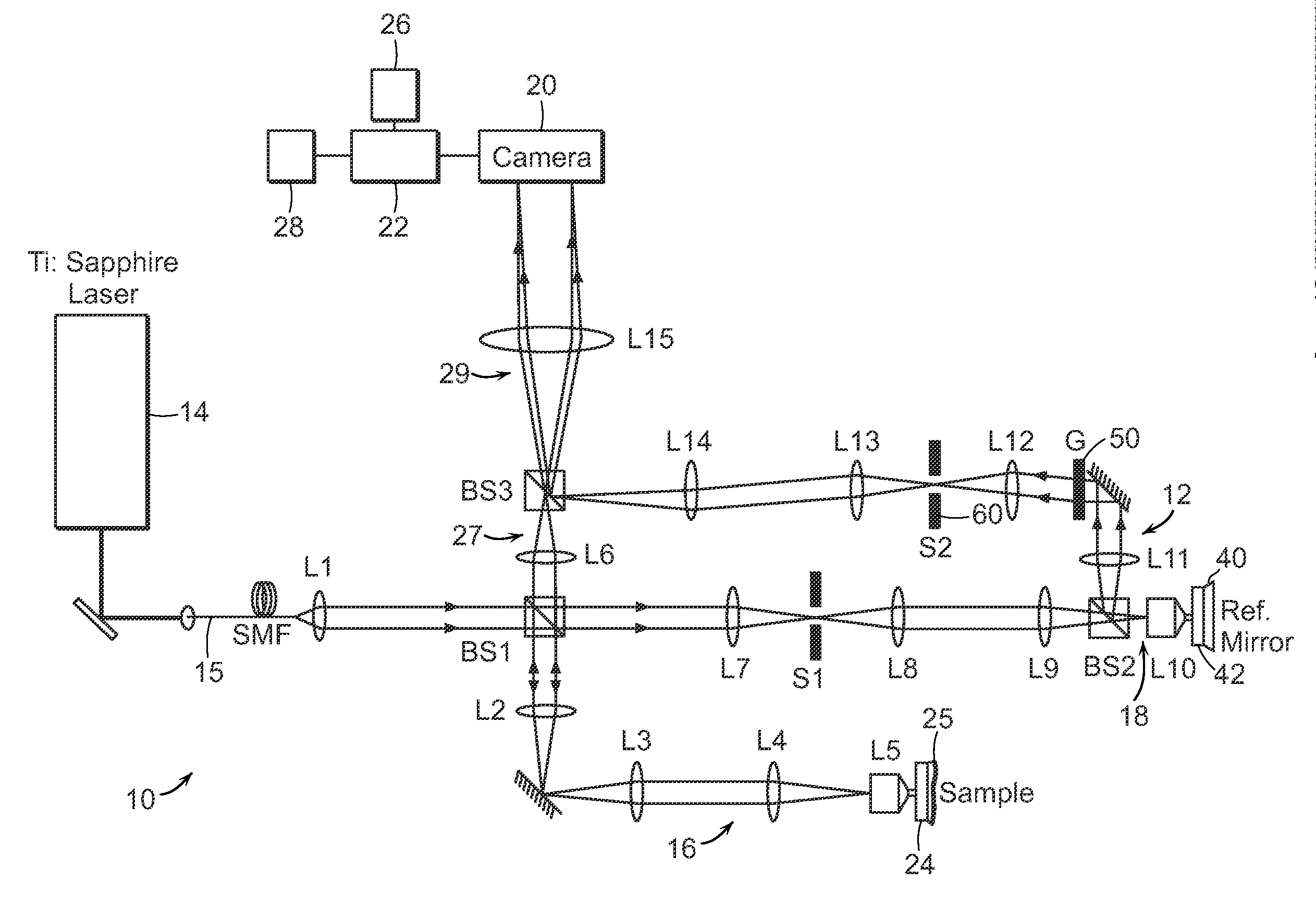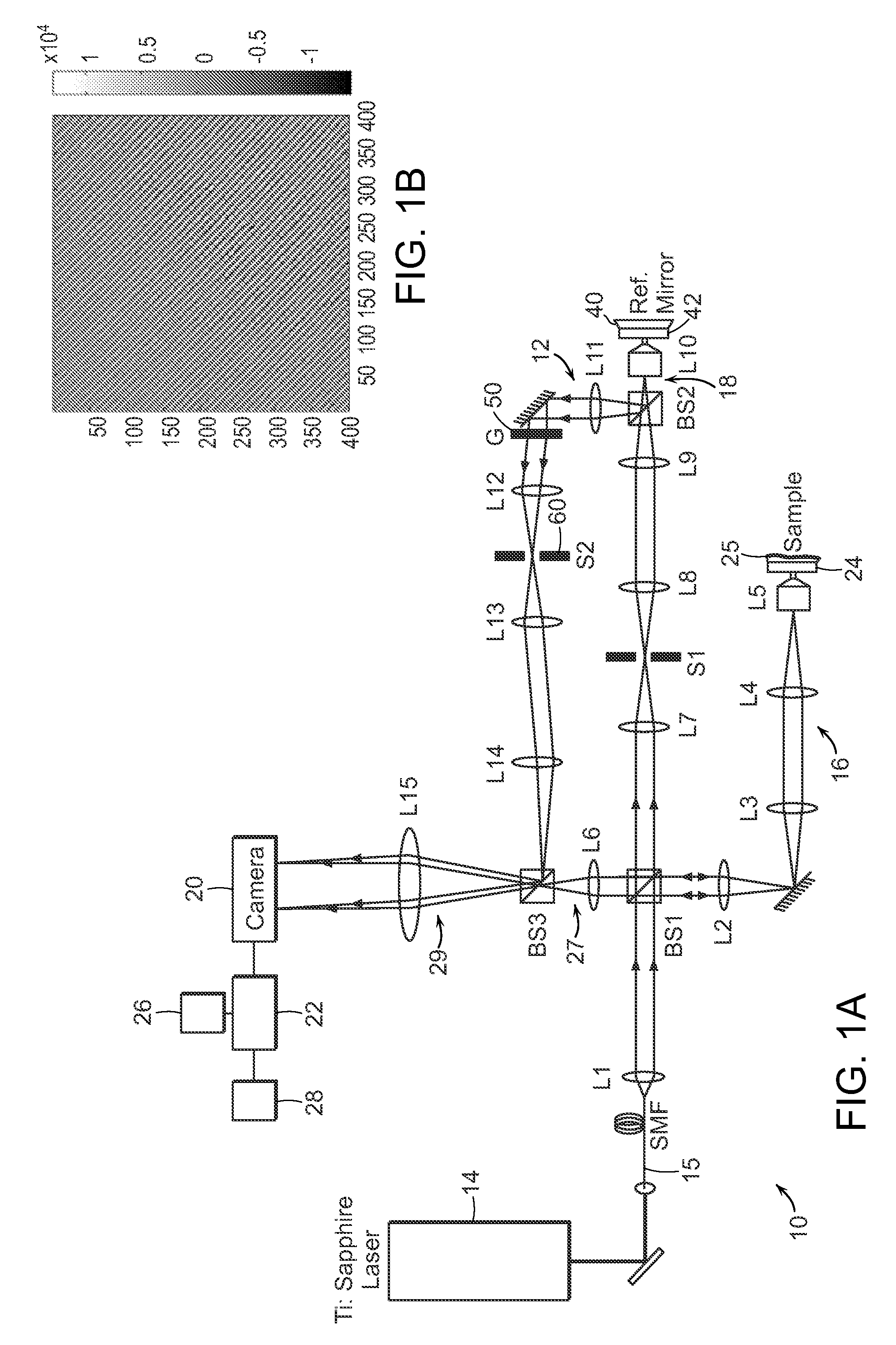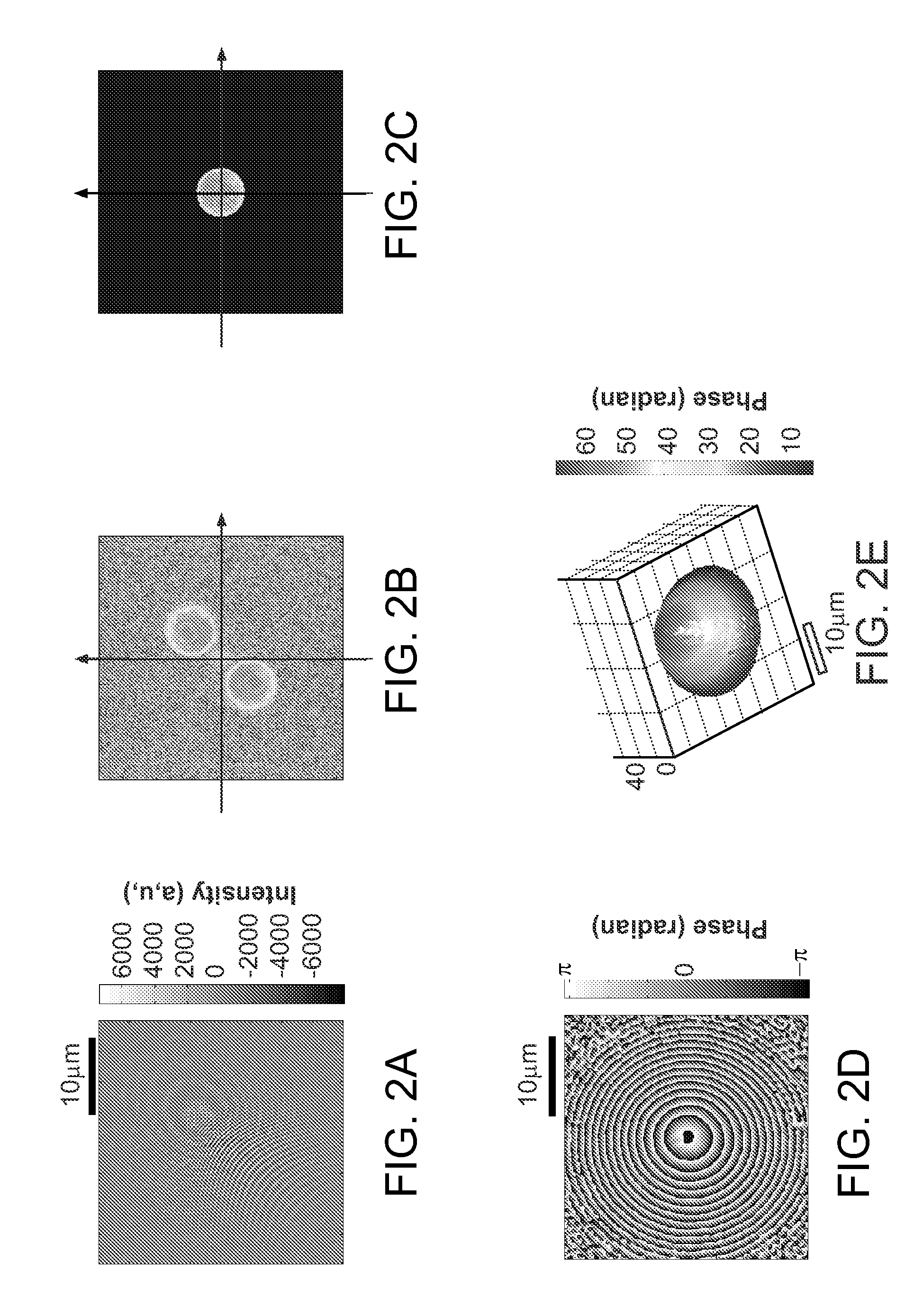Single-shot full-field reflection phase microscopy
a reflection phase and single-shot technology, applied in the field of quantitative study of mechanical properties of live cells, can solve the problems of limited usefulness, insufficient acquisition rate of cellular dynamics, and limitations of time domain optical coherence tomography (oct) based implementation of reflection phase microscopy, and achieve the effect of improving measurement sensitivity
- Summary
- Abstract
- Description
- Claims
- Application Information
AI Technical Summary
Benefits of technology
Problems solved by technology
Method used
Image
Examples
Embodiment Construction
[0026]FIG. 1A shows the schematic of a preferred embodiment of the invention providing single-shot full-field reflection phase microscope (FF-RPM). Light from a mode-locked Ti:Sapphire laser (center wavelength, λc=800 nm) is coupled into a single-mode fiber 15 for delivery as well as for spectrum broadening. The full-width-half-maximum spectral width, AA at the fiber output measures 50 nm, which yields a round trip coherence length of 4 μm in a typical culture medium with refractive index, n, equal to 1.33. The sample beam that travels along the first beam path 16 through lenses L2, L3, L4, and a water immersion 60× objective lens L5 (NA=1.2), reflects off the sample surface 24 and makes an image of the sample on a high-speed complementary metal oxide semiconductor (CMOS) camera via lenses L6 and L15. The camera can be a pixelated imaging detector 20 that is connected to a data processor or computer 22 which can process images, provide the images to a display 26 or to a memory 28 fo...
PUM
 Login to View More
Login to View More Abstract
Description
Claims
Application Information
 Login to View More
Login to View More - R&D
- Intellectual Property
- Life Sciences
- Materials
- Tech Scout
- Unparalleled Data Quality
- Higher Quality Content
- 60% Fewer Hallucinations
Browse by: Latest US Patents, China's latest patents, Technical Efficacy Thesaurus, Application Domain, Technology Topic, Popular Technical Reports.
© 2025 PatSnap. All rights reserved.Legal|Privacy policy|Modern Slavery Act Transparency Statement|Sitemap|About US| Contact US: help@patsnap.com



